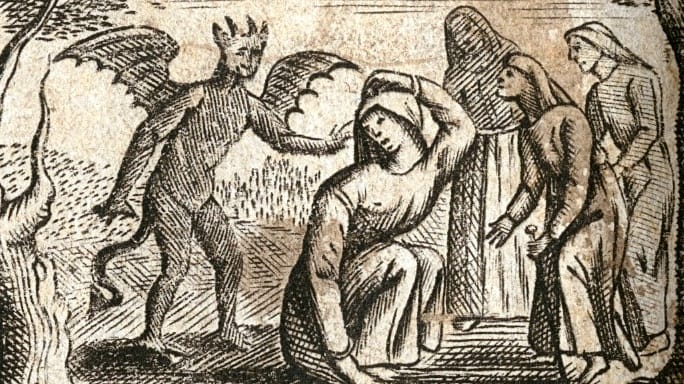
Demonology, the study of demons and other dark spiritual entities, has long intrigued scholars, mystics, and occultists. It explores the nature, history, and power of these supernatural beings. Among the many sources on demonology, the Goetia stands as one of the most influential texts. In this article, we will explore the Goetia and other significant works in the field, offering insight into these powerful entities and their role in various belief systems.
What is Demonology?
Demonology focuses on the study of demons and their interactions with humans. Throughout history, cultures have depicted demons in various ways—some see them as malevolent spirits, while others view them as fallen angels or chaotic forces. These interpretations reflect deep human fears and complex spiritual beliefs.
In Christian theology, demons are often considered fallen angels who were cast out of heaven after rebelling against God. On the other hand, other traditions regard demons as neutral beings or forces of destruction. Despite differences in depiction, the core idea in demonology remains the same: demons hold power, and those who understand them may harness or overcome it.
The Goetia: A Key Source in Demonology
The Goetia is a prominent section of the Lesser Key of Solomon, a medieval grimoire centered on summoning and controlling demons. It lists 72 demons, each with specific attributes, ranks, and abilities. According to the text, King Solomon had the wisdom to command these demons, utilizing their power for various purposes.
This grimoire offers detailed descriptions of these demons, including their names, appearances, and specific powers. For example, Baal, one of the most famous demons mentioned in the Goetia, can make people invisible and summon storms.
The Goetia serves not only as a guide for summoning demons but also for controlling and negotiating with them. It provides rituals, symbols, and incantations necessary for invoking these entities. While it is often associated with dark practices, the Goetia offers a window into the complex relationships between humans and supernatural beings.
Other Key Sources in Demonology
Beyond the Goetia, several other texts have shaped the field of demonology. These sources offer additional insights into the nature of demons and their role in spiritual traditions. Here are a few notable examples:
1. The Pseudomonarchia Daemonum (The False Hierarchy of Demons)
Written by Johann Weyer in 1583, the Pseudomonarchia Daemonum is another essential text in demonology. Like the Goetia, it lists various demons, but it presents a distinct hierarchy and offers more details on the nature and abilities of each one. This work has significantly influenced later demonological writings and is often seen as a complement or alternative to the Goetia.
2. The Dictionnaire Infernal by Collin de Plancy
Published in 1818, the Dictionnaire Infernal by Collin de Plancy is another landmark in the study of demons. This comprehensive reference work categorizes demons based on their characteristics, roles, and representations in art and literature. It also features illustrations of many demons, offering a visual dimension to the descriptions.
3. The Grimorium Verum (The True Grimoire)
The Grimorium Verum, written in the 16th century, is a famous grimoire focused on summoning spirits and demons. It offers instructions on invoking various demons, along with methods for gaining their favor. Although the practices described in the Grimorium Verum are often considered dangerous, the text remains an important resource for occultists and those studying demonology.
The Influence on Modern Culture
Demonology has left a lasting impact on popular culture, particularly in horror literature, films, and TV shows. Demons, with their powers and sinister motives, are central figures in many iconic works. From The Exorcist to Supernatural, demons continue to captivate audiences around the world.
Beyond entertainment, demonology reflects deep psychological and cultural themes. The study of demons reveals much about human nature, our fears, and the ongoing battle between good and evil. Whether approached literally or symbolically, demons offer insight into the complexities of the human experience.
Conclusion
Demonology, through texts like the Goetia and other ancient grimoires, opens a fascinating window into the supernatural. These sources not only describe demons but also offer a glimpse into the rituals and beliefs of those who sought to control them. As we study these texts, we gain a deeper understanding of the role demons have played in various cultures. Despite their often frightening nature, demons symbolize power, mystery, and the unknown. Whether for spiritual study, historical exploration, or creative inspiration, demonology continues to captivate and inspire curiosity.

